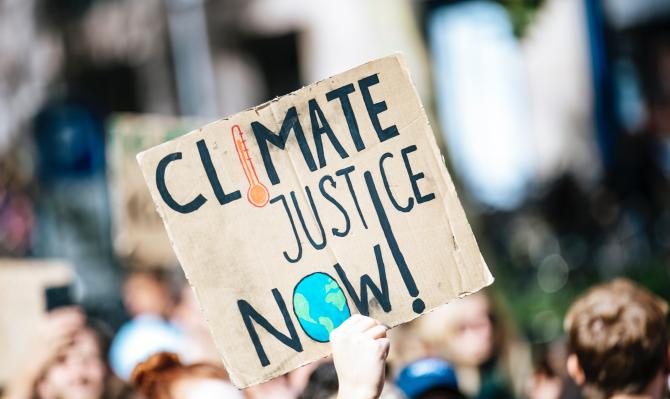
European NGEU funds in 2022 (and beyond): a clear commitment to green sustainability
What is expected in 2022 in terms of sustainable investments? We gauge the importance of environmental sustainability in the European NGEU funds as part of the Recovery and Resilience Mechanism.
Sustainability is a multifaceted term, as it encompasses elements related to the environment, social aspects and governance. In this article we focus on the most classic concept of sustainability, the environmental one, with an analysis aimed at gauging its importance in the European NGEU funds as part of the Recovery and Resilience Mechanism. This mechanism will represent a total of 70 billion euros in grants for the Spanish economy, due to be received between 2021 and 2023 if the various milestones are met and the associated reforms carried out, and 40% of this amount will be allocated to green investments (the minimum required by the European Commission is 37%).1 Beyond the headline figures, what is expected in 2022 in the sphere of sustainable investments? This is a burning question in a geopolitical context in which we are seeking to boost renewable energies across Europe in order to reduce our dependence on fossil fuels, a process which has taken on a particular relevance with the plans to reduce the bloc’s dependence on Russian energy. Thus, right now, with energy prices at such high levels and problems guaranteeing supply, the economic and the environmental issues go hand in hand. Not in vain, energy security, affordability and sustainability – three goals which for years were contradictory – are now aligned.
- 1The government is preparing an addendum to the Recovery Plan to also request 70 billion in loans.
NGEU 2022 projects: a commitment to sustainability of (at least) 11 billion euros
The fact is that environmental sustainability is one of the top priorities of the NGEU investments planned for 2022. Included in the 2022 General Government Budget is a total of 28 billion euros from the Recovery and Resilience Mechanism, including 11.4 billion which we identify as investments primarily aimed at environmental sustainability. This is a conservative estimate, however. For instance, the 1.7 billion that will be allocated to improving local rail networks and rail interconnections with the rest of Europe could also be considered sustainable, as this will help to cut carbon emissions associated with the use of private transportation.
What are the main sustainable investments due to be carried out with these funds in 2022? Of particular note are the five investments with a budget in excess of 1 billion euros (see first chart). The first barrage of these includes a plan to create a more sustainable tourism sector (with a budget of 1.4 billion euros), projects to refurbish homes and neighbourhoods with a view to boosting their energy efficiency (1.39 billion) and investments to transform the industrial and R&D&i sectors to make them more sustainable (1.36 billion euros). Close behind them, with a budget of over 1 billion euros respectively, are investments to implement low-emission zones in urban areas and to boost the energy efficiency of public buildings through refurbishments. Finally, in the medium term there will be key investments aimed at boosting renewable energies in Spain and thus reducing the country’s dependence on fossil fuels. Projects for the development of renewable hydrogen, the installation of electric vehicle charging points and the development of renewables will thus exceed 400 million euros in 2022 in each of these three lines.

The key now is to ensure that this money flows to the productive sector and that these investments are executed through well-designed and sufficiently extensive tender processes. The current symbiosis between sustainability and economy, due to the geopolitical context and the need to accelerate the energy transition, represents a window of opportunity that should favour the execution of these projects, although rising commodity prices and tightening financial conditions may delay some investments. In the first four months of the year, according to data from the General Comptroller of the State Administration (IGAE), only 14% of this 11.4 billion related to sustainability was already committed (i.e. there was legal authorisation for the funds to be distributed, although a portion of this merely relates to cash being moved around between government departments). Specifically, as of 30 April,
600 million had been committed to sustainability in tourism, 500 million to the construction of energy-efficient social rental housing, around 400 million to the sustainable refurbishment of public buildings and 120 million to waste management.
Beyond 2022: an ambitious project focusing on renewable energies and hydrogen
Beyond 2022, we cannot finish this article without mentioning the ambitious PERTE (an acronym in Spanish for Strategic Project for Economic Recovery and Transformation) focused on renewable energies, renewable hydrogen and energy storage. The PERTE projects are public-private collaborative efforts aimed at transforming the value chain of strategic economic sectors, and this particular one is expected to provide a major boost to the sustainability of the economy. The sub-projects associated with it will be carried out between 2022 and 2026 and will have a public investment of 6.9 billion euros (this is the second largest PERTE project, behind only the one related to microchips) as well as private-sector co-financing expected to reach 9.5 billion. This PERTE project will be key for reducing the Spanish economy’s reliance on fossil fuels, and as early as 2022 the public sector is expected to invest 2.35 billion euros.2 This includes 450 million earmarked for self-consumption projects, 400 million for the transformation of transportation service fleets, 400 million to boost the renewable hydrogen value chain and 150 million for the development of biogas.
This PERTE project will comprise two main lines of action. The first consists of 17 measures aimed at facilitating the transformation of the energy model, including: boosting renewable self-consumption facilities (public investment of 900 million euros), investment in the digitalisation of the distribution networks in order to improve the integration of decentralised renewable energy generation (525 million) and developing renewable thermal energy (500 million).
The second line of action consists of 25 measures aimed at transforming the energy model, including 1,555 million of public investment for the renewable hydrogen value chain and 765 million for innovative renewable energies (this is intended to accelerate the use of offshore renewable energy, taking advantage of the country’s 8,000-km coastline).
In short, the Recovery Plan will provide a significant boost to the sustainability of our economy. This should be combined with a broad strategic vision that allows us to seize opportunities to boost Spain’s role at the European level in the energy sphere (for example, by creating a connection with France to redirect some of the gas we receive from North Africa).
- 2This sum is part of the 11 billion which we have identified as sustainable.





